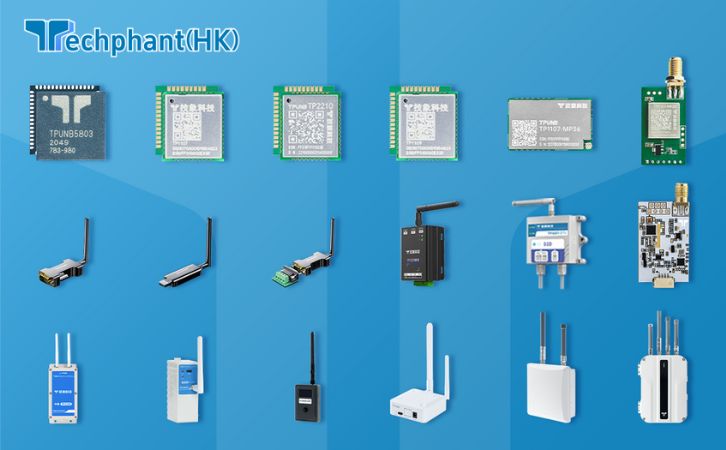Highway bridges are critical infrastructure, and ensuring their safety and longevity is paramount. The integration of Internet of Things (IoT) technologies has revolutionized bridge monitoring by enabling real-time data collection, analysis, and early warning systems. IoT solutions combine sensors, communication networks, and advanced analytics to detect structural issues, environmental impacts, and operational stresses, preventing catastrophic failures. This article explores four key IoT technologies driving bridge monitoring, detailing their functionalities, applications, and challenges.
I. Sensor Technologies for Structural and Environmental Monitoring
Sensors are the backbone of IoT-based bridge monitoring systems, collecting data on structural health and environmental conditions. Common sensor types include strain gauges, accelerometers, displacement sensors, temperature sensors, and corrosion detectors. Strain gauges measure material deformation under load, while accelerometers detect vibrations caused by traffic or seismic activity. For instance, a strain gauge on a bridge’s beam can identify excessive stress from heavy vehicles, signaling potential fatigue.
Environmental sensors monitor factors like temperature, humidity, and water levels, which affect bridge integrity. Temperature sensors, for example, detect thermal expansion in steel components, preventing damage from extreme heat or cold. In flood-prone areas, water-level sensors alert authorities to rising rivers that could erode bridge foundations. These sensors are typically low-power, designed to operate for years with minimal maintenance. However, challenges include sensor calibration drift over time and vulnerability to harsh weather, necessitating ruggedized designs and regular maintenance to ensure accuracy.
II. Wireless Communication Protocols for Data Transmission
IoT systems rely on wireless communication protocols to transmit sensor data to centralized platforms for analysis. Protocols like Long Range (LoRa), Narrowband IoT (NB-IoT), and 5G are widely used in bridge monitoring due to their efficiency and coverage. LoRa is ideal for remote bridges, offering long-range communication (up to 15 km) with low power consumption, enabling sensors to send data without frequent battery replacements. NB-IoT, leveraging cellular networks, provides reliable connectivity in urban areas with deep penetration for sensors embedded in concrete.
5G, with its high bandwidth and low latency, supports real-time applications, such as streaming vibration data during heavy traffic. For example, a 5G-enabled system on a busy urban bridge can transmit high-frequency accelerometer data to detect anomalies instantly. Challenges include ensuring network coverage in rural areas for LoRa or NB-IoT and the high cost of 5G infrastructure. Additionally, cybersecurity risks, such as data interception, require robust encryption and authentication protocols to protect sensitive structural information.
III. Cloud-Based Data Analytics and Machine Learning
Cloud platforms process and analyze the vast amounts of data generated by bridge sensors, transforming raw measurements into actionable insights. IoT systems use cloud-based software to aggregate data, perform real-time analytics, and store historical records for trend analysis. Machine learning algorithms enhance these platforms by identifying patterns indicative of structural issues. For instance, a neural network trained on vibration data can distinguish normal traffic patterns from abnormal signals caused by cracks or loose bolts.
Predictive maintenance is a key benefit, as machine learning models forecast when components like bearings or cables need replacement, reducing downtime and costs. A 2024 study found that cloud-based IoT systems reduced bridge maintenance costs by 25% through predictive analytics. However, challenges include the need for high computational resources, which can increase cloud service costs, and the complexity of training accurate models, requiring extensive historical data. Data latency in remote areas with poor connectivity can also delay critical alerts, necessitating edge computing for time-sensitive applications.
IV. Integration with Early Warning and Visualization Systems
IoT technologies enable early warning systems that alert authorities to potential bridge failures, integrating sensor data with visualization tools for decision-making. Dashboards display real-time metrics, such as stress levels or vibration frequencies, allowing engineers to assess bridge conditions instantly. For example, a web-based dashboard can highlight a bridge pier experiencing excessive displacement, prompting immediate inspection. These systems often integrate with SMS or email alerts, notifying maintenance teams of anomalies like sudden foundation shifts during floods.
Advanced visualization tools, such as digital twins, create virtual replicas of bridges, simulating structural behavior under various conditions. A digital twin of a suspension bridge, for instance, can predict cable fatigue based on real-time wind and traffic data. Challenges include the complexity of integrating heterogeneous data sources, such as combining strain and weather data, and ensuring user-friendly interfaces for non-technical stakeholders. Additionally, false positives from sensitive sensors can overwhelm response teams, requiring fine-tuned thresholds and validation mechanisms.
Conclusion
IoT technologies—sensors, wireless communication protocols, cloud-based analytics, and early warning systems—have transformed highway bridge monitoring by providing real-time insights into structural health and environmental risks. These systems enable proactive maintenance, enhance safety, and extend bridge lifespans, but face challenges like sensor durability, connectivity limitations, computational costs, and system integration complexities. By addressing these hurdles through ruggedized hardware, hybrid connectivity, edge computing, and user-centric design, IoT solutions will continue to evolve, ensuring safer and more resilient bridge infrastructure. As advancements in AI and 5G accelerate, the future of IoT in bridge monitoring promises even greater precision and efficiency.


